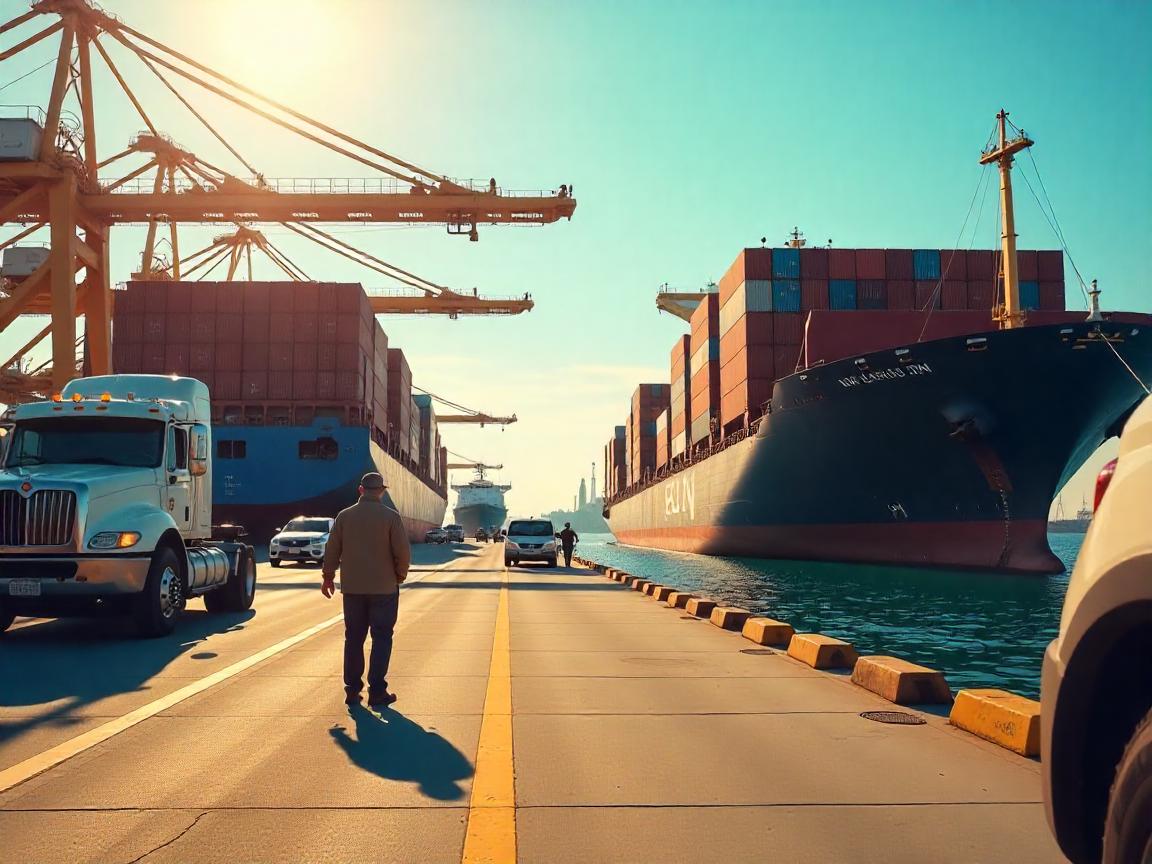Recente calo delle importazioni di merci dagli Stati Uniti
La recente flessione delle importazioni di merci dagli Stati Uniti segna il primo calo dal 2023, attribuito principalmente alle nuove tariffe imposte. Queste tariffe includono un minimo di 10% applicato a tutti e un incredibile 145% sulle importazioni dalla Cina. Questo sviluppo si è verificato durante una stagione chiave per gli acquisti, il che amplifica il suo impatto sia sui rivenditori che sulle operazioni logistiche.
Implicazioni per le importazioni globali di container
Negli ultimi due decenni, il settore delle importazioni di container a livello mondiale ha registrato una traiettoria di crescita fiorente. Tuttavia, le proiezioni indicano ora le sfide che si prospettano per il 2024. Le notizie in prima pagina suggeriscono riduzioni tariffarie per un periodo limitato, ma tali cambiamenti potrebbero potenzialmente influenzare i comportamenti commerciali, incidendo sul funzionamento della logistica e delle catene di approvvigionamento nel prossimo futuro.
Secondo le analisi della National Retail Federation (NRF) e i dati del Global Port Tracker di Hackett Associates, l'analisi delle importazioni di container dal 2004 al 2023 rivela una costante tendenza all'aumento. Tuttavia, le previsioni per l'anno prossimo riflettono una leggera flessione, sottolineando il cambiamento delle dinamiche del commercio globale e della gestione della logistica.
Traiettoria delle importazioni globali dal 2004 al 2023
Il periodo tra il 2004 e il 2023 ha registrato un'impennata considerevole, con un aumento delle importazioni globali di container da 14,4 milioni di TEU (unità equivalenti a venti piedi) a 25,5 milioni di TEU entro il 2023. Questa crescita è stata determinata da diversi fattori:
- Economia globale solida: I primi anni 2000 sono stati caratterizzati da una fiorente crescita economica, che ha favorito la domanda dei consumatori.
- Catene di fornitura globali ampliate: L'interconnessione dei mercati globali ha svolto un ruolo fondamentale.
- Progressi tecnologici: I miglioramenti dei processi logistici hanno contribuito in modo significativo a questo boom.
In particolare, dal 2010 al 2019, si sono registrati notevoli aumenti annuali che hanno costantemente spinto le importazioni oltre la soglia dei 16 milioni di TEU alla fine del decennio. Anche dopo aver affrontato la crisi finanziaria del 2008, il settore si è ripreso con vigore, raggiungendo i 18,5 milioni di TEU nel 2013. L'ondata generata dalla pandemia COVID-19 ha visto un ulteriore calo nel 2020, ma la ripresa è stata rapida, con un'impennata delle importazioni a 25,8 milioni di TEU nel 2021.
Dinamiche in evoluzione per il 2024
Le previsioni per il 2024 indicano una leggera riduzione delle importazioni globali di container, per un totale di 25,5 milioni di TEU. Questa cifra rivela una diminuzione rispetto ai 25,8 milioni di TEUs registrati l'anno precedente, e lascia intendere le preoccupazioni di fondo che i professionisti della logistica e le aziende devono affrontare.
I fattori previsti che contribuiscono a questo calo includono:
- Le sfide della catena di approvvigionamento in corso: Le interruzioni globali continuano a persistere e a influenzare le operazioni.
- Fluttuazioni della domanda dei consumatori: I cambiamenti nel comportamento di acquisto possono influenzare pesantemente i volumi delle importazioni.
- Incertezza economica: Le condizioni economiche di mercati critici come gli Stati Uniti e la Cina potrebbero frenare le attività commerciali.
Questo calo delle importazioni non solo riflette lo stato del commercio internazionale, ma evidenzia anche la necessità per le aziende di essere adattabili in un panorama in continua evoluzione. Sebbene i dati sulle importazioni rimangano relativamente resistenti in tempi turbolenti, le aziende potrebbero dover adottare una strategia più cauta in vista del 2024.
Prospettive a lungo termine per le importazioni di container
All'orizzonte, le prospettive per le importazioni di container rimangono ottimistiche. Le proiezioni indicano una crescita oltre il 2024, alimentata da alcuni fattori:
- Innovazione tecnologica: I progressi della tecnologia di spedizione potrebbero snellire le operazioni e ridurre i costi.
- Cambiare le abitudini dei consumatori: L'evoluzione delle preferenze dei consumatori può determinare nuove richieste.
- Mercati emergenti: La continua crescita di questi mercati promette di sostenere la domanda di servizi di trasporto.
Inoltre, si prevede che il potenziamento delle infrastrutture portuali e il miglioramento della resilienza della catena di approvvigionamento sosterranno una traiettoria positiva per le importazioni globali nei prossimi anni. Anche se nel 2024 potrebbe verificarsi un leggero calo, la tendenza generale rimane quella della crescita e dell'adattamento nell'arena del commercio globale.
Conclusione
In sintesi, i recenti cambiamenti tariffari hanno messo a nudo le sfide per le importazioni di merci dagli Stati Uniti, ridisegnando potenzialmente le strategie logistiche per le aziende che navigano in questo ambiente. Poiché le tendenze mostrano una diminuzione delle importazioni, pur indicando un solido percorso di ripresa a lungo termine, diventa fondamentale per le aziende rimanere informate e agili. GetTransport.com si presenta come un fornitore di soluzioni, in grado di soddisfare una vasta gamma di esigenze logistiche, offrendo un trasporto merci conveniente e affidabile a livello globale. Con vari servizi, che si tratti di trasferimenti di uffici, consegne di articoli ingombranti o soluzioni di spedizione efficienti, GetTransport.com semplifica la logistica per tutti gli utenti. Il risultato è chiaro: anche le recensioni più approfondite non possono sostituire l'esperienza personale, quindi prendete in considerazione la convenienza e le ampie opzioni fornite da GetTransport.com per gestire le vostre esigenze logistiche senza problemi. Prenotate il vostro viaggio oggi stesso su GetTransport.com.com.

 Le importazioni di merci dagli Stati Uniti subiscono il primo calo dal 2023 a causa delle tariffe doganali">
Le importazioni di merci dagli Stati Uniti subiscono il primo calo dal 2023 a causa delle tariffe doganali">